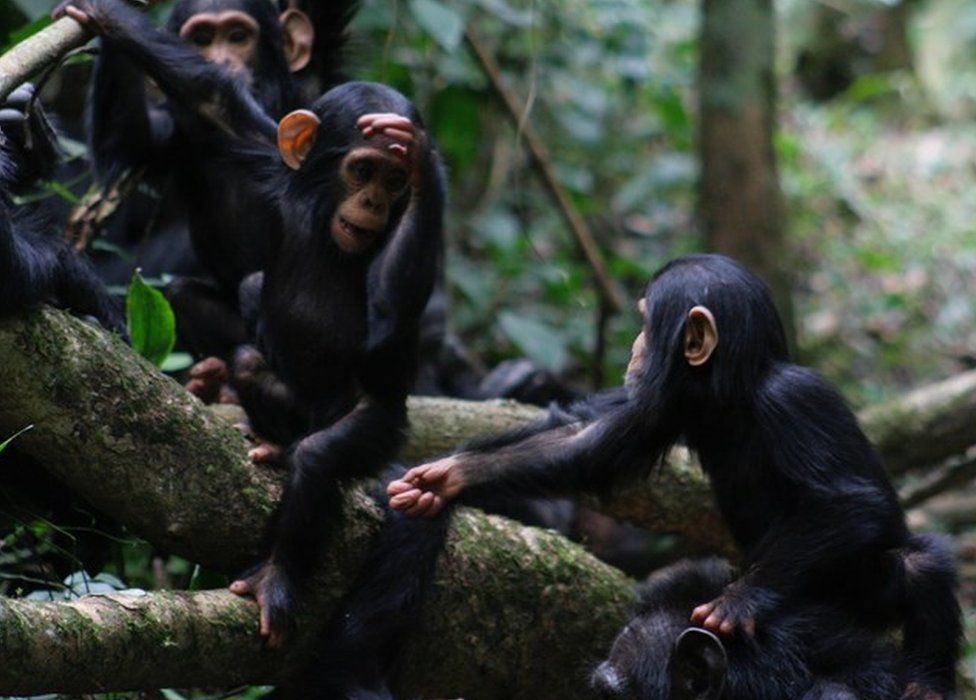ARTICLE AD BOX
 Image source, St Andrews University
Image source, St Andrews University
Chimps use a whole lexicon of gestures to convey messages like 'play with me' to other members of their group
By Victoria Gill
Science correspondent, BBC News
Humans understand the "signs" or gestures wild chimps and bonobos use to communicate with one another.
That is the conclusion of a video-based study in which volunteers translated ape gestures. It was carried out by researchers at St Andrews University.
It suggests that the last common ancestor we shared with chimps used similar gestures, and that these were a "starting point" for our language.
Lead researcher, Dr Kirsty Graham from St Andrews University explained: "We know that all the great apes - chimps and bonobos - have an overlap of about 95% of the gestures they use to communicate.
"So we already had a suspicion that this was a shared gesturing ability that might have been present in our last shared ancestor. But we're quite confident now that our ancestors would have started off gesturing, and that this was co-opted into language."
This study was part of an ongoing scientific mission to understand this language origin story by carefully studying communication in our closest ape cousins.
This team of researchers has spent many years observing wild chimpanzees. They previously discovered that the great apes use a whole "lexicon" of more than 80 gestures, each conveying a message to another member of their group.
Messages like "groom me" are communicated with a long scratching motion; a mouth stroke means "give me that food" and tearing strips from a leaf with teeth is a chimpanzee gesture of flirtation.
Translating apes
Scientists used video playback experiments, because the approach has traditionally been used to test language comprehension in non-human primates. In this study, they turned the approach on its head to assess humans' abilities to understand the gestures of their closest living ape relatives.
Volunteers watched videos of the chimps and bonobos gesturing, then selected from a multiple choice list of translations.
The participants performed significantly better than expected by chance, correctly interpreting the meaning of chimpanzee and bonobo gestures over 50% of the time.
"We were really surprised by the results," said Dr Catherine Hobaiter from St Andrews University. "It turns out we can all do it almost instinctively, which is both fascinating from an evolution of communication perspective and really quite annoying as a scientist who spent years training how to do it," she joked.
The gestures people can innately understand may form part of what Dr Graham described as "an evolutionarily ancient, shared gesture vocabulary across all great ape species including us".
Follow Victoria on Twitter

 2 years ago
79
2 years ago
79








 English (US) ·
English (US) ·